Original text by: Marina Belova
Trapunto embroidery technique, which produces an embossed effect, caught my attention long ago. Of course, I don't mean the traditional trapunto, but its machine embroidery counterpart. There are numerous materials on the subject; I've studied them, as I usually do, and came to the conclusion that doing something like that was within my powers. Therefore, several days ago I decided to bring a small project to life.
The most encouraging thing for me were the numerous affirmations that for imitating the trapunto technique any simple redwork design will do.
So I chose an image, which seemed interesting for my purpose. I created a design (7421 stitches), expecting for the batting to produce a raised surface in places with no filling.
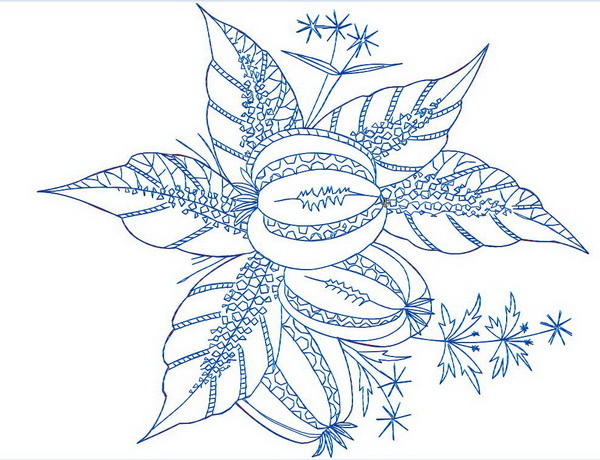
Then I proceeded with my project according to the instruction I've found on the internet.
I chose ordinary calico for the right side, a piece of polyester batting 0,5 cm thick (not the one used for quilting, I don't have any, as don't yet have the compelling reason to buy it) and a tearaway stabilizer.
I hooped the following 'sandwich': a stabilizer, 2 layers of polyester batting, and calico:

I started the embroidery and the first thing I stitched was the outline, according to which I will then cut the batting on the wrong side. I chose the threads that contrasted the background, in order to see everything well.
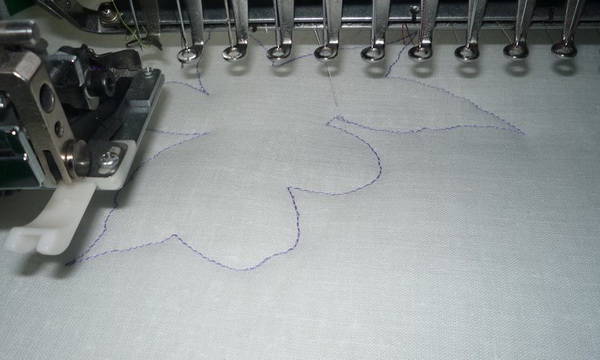
Then I took the hoop off the machine and, having overturned it, began to cut the batting as close to the stitching as possible:
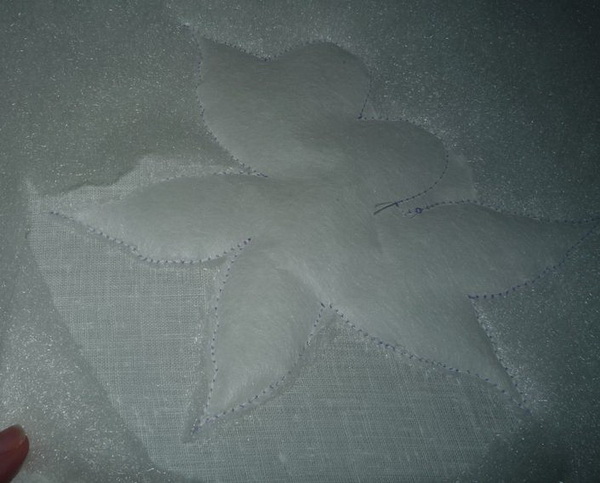
Having trimmed all the extra pieces I sprayed another layer of batting with a temporary spray adhesive and secured it on the wrong side of the hoop.
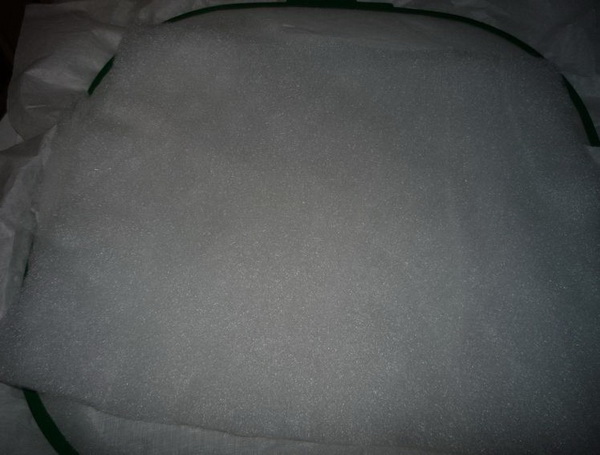
Then I inserted this hoop together with the batting into the machine and put a piece of stabilizer under it.
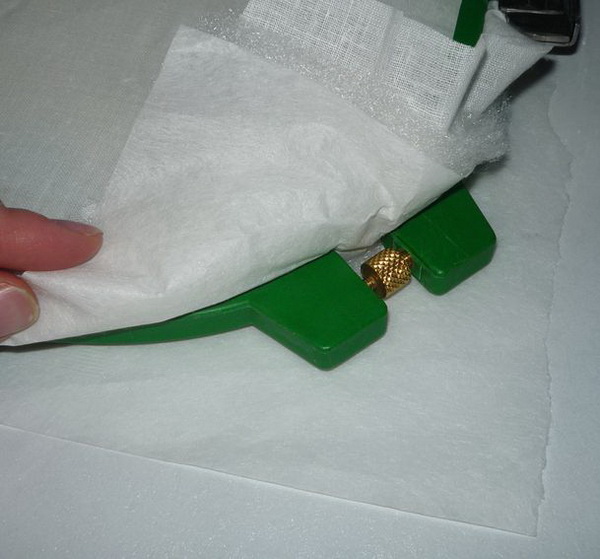
Then I embroidered the rest of the design:
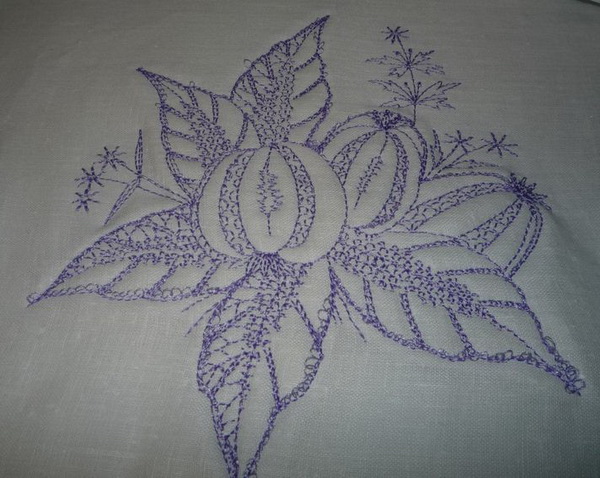
The result turned out to be disappointing:
- The upper thread was all in loops and the tension was difficult to adjust with such a thick basis (fabric+polyester batting+stabilizer).
- The design had shifted because of the insufficient stabilization.
- There was no puffiness.
I had a sneaking suspicion that the chosen batting was a bit unsuitable for a design of this kind, which involved using the ordinary fabric, too. To be more precise it was entirely unsuitable. Plus, the design should be digitized in the other way.
After that, I decided to read some more on the subject. Therefore, my second attempt to seize the trapunto fortress began with:
- Making the design simpler
- Checking if the type of the fabric was suitable for my purpose in case I didn't have a proper quilting batting.
This time, I decided to make a simple design with a number of motif fills around the assumed puffy areas (the stitch count here is higher than in the previous design, i.e. 13365).

First, I decided to test this design on the same fabric, i.e. calico.
I hooped my 'sandwich': stabilizer, 1 layer of batting polyester (the same as the last time), and calico.
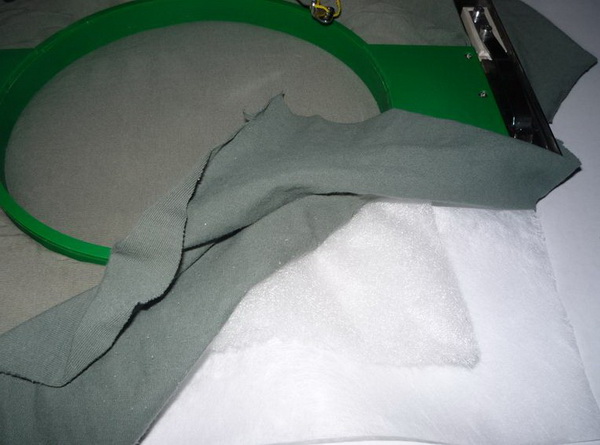
Embroidered the design:
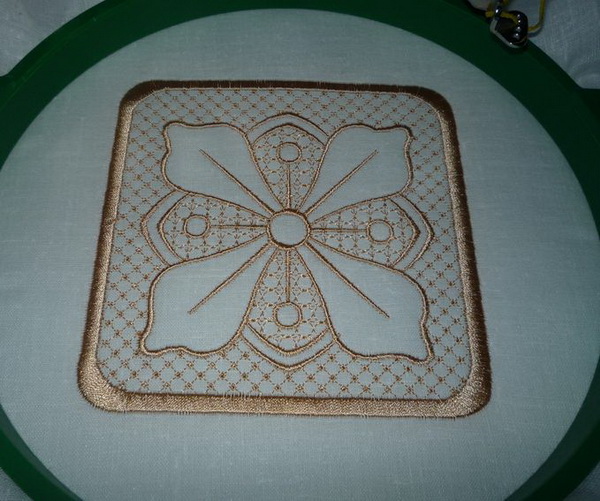
Trimmed the stabilizer on the wrong side.
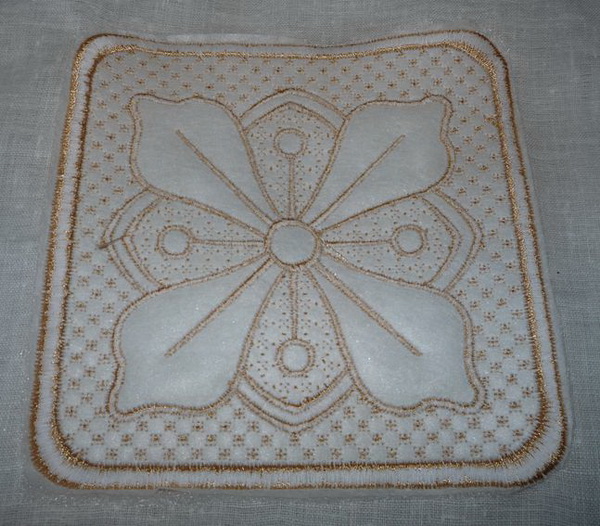
The petals became a bit raised, but not sufficiently so:

At that point, I decided to check if my suspicions about my batting being unsuitable for this type of fabric were true and to embroider the same design on knitwear with other components — namely, the stabilizer, 1 layer of polyester batting (the same as the last time), knitwear — remaining the same.
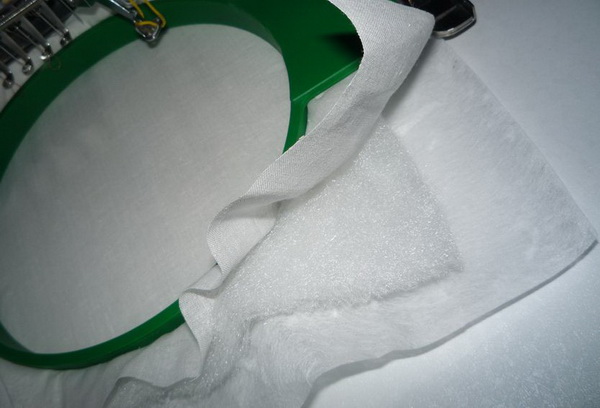
During the embroidery I begin to see the long-desired puffiness — the surface of the petals became raised:
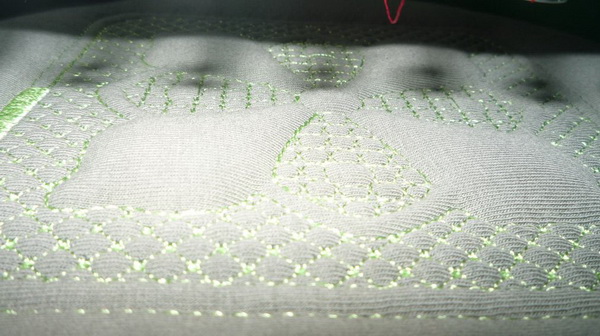
This is how the ready embroidery looks when still in the hoop:
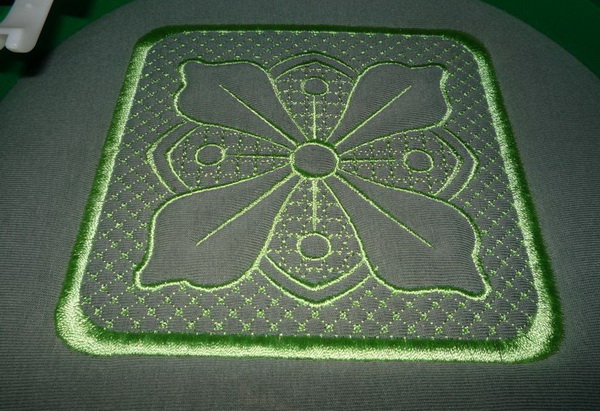
And this is the look from the side — the puffiness in petals has been achieved:
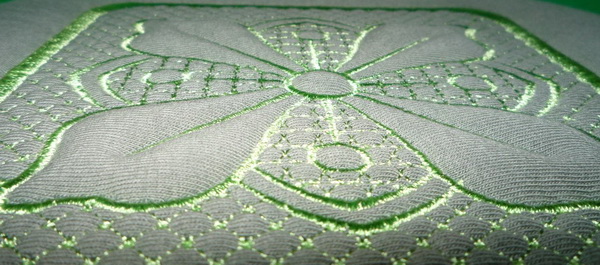
Hence the conclusion: all ordinary fabrics require special batting, as for the knitwear and other stretchy textiles any one would do.
You should choose the design with care. Judging by the machine embroidery design collections in the Western shops, they prefer simple designs for this particular technique. I think, there is a grain of truth in it.
But it is not always possible, and you have to experiment. But it is even intriguing.



There are no reviews to display.